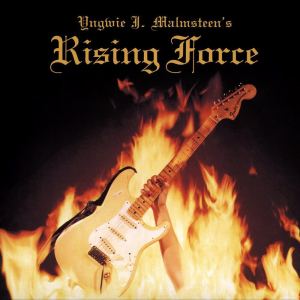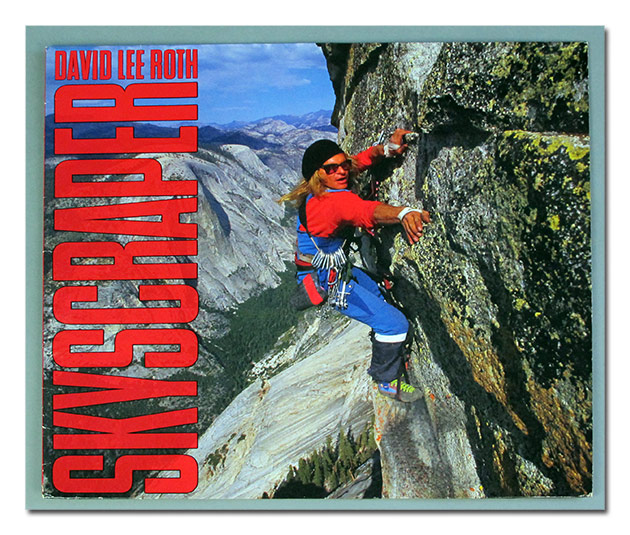 When movingtheriver started playing guitar and buying muso magazines in the late 1980s, the name Yngwie J Malmsteen seemed to inspire awe throughout the whole ‘scene’.
When movingtheriver started playing guitar and buying muso magazines in the late 1980s, the name Yngwie J Malmsteen seemed to inspire awe throughout the whole ‘scene’.
I was intrigued but there was no way you could just happen upon Malmsteen’s music in the UK unless you listened religiously to The Friday Rock Show with Tommy Vance (I didn’t).
Then my interest was piqued again when It Bites’ Francis Dunnery mentioned him in a Guitarist magazine interview from October 1989, and almost immediately after that I found his debut solo album Rising Force – released 40 years ago this month – in a bargain bin at the Richmond Our Price.
You could make an argument that the Swede – born Lars Lannerback! – was THE rock guitarist of the 1980s, having as much of an impact as Eddie Van Halen did five years before. Rising Force was a perfect bridge between the UK, Genesis and Yes albums I was investigating and the heavier influences coming in from Steve Vai and Van Halen.
But, as with any freaky guitar virtuoso, the main issue was finding the right musical context. Rising Force has its duff songs (though always with brilliant guitar playing) but delivers two of the most stunning instrumentals in rock history, ‘Black Star’ and ‘Icarus Dream Suite Op.4’. And to think he was just 20 when he recorded them.
With Malmsteen’s scalloped Strat and nods to Paganini, Bach, Albinoni and Mozart, he achieved (and achieves) a remarkable control of vibrato, both via fingers and whammy bar – demonstrating possibly influences from Allan Holdsworth and Al Di Meola at this early stage – and superb tone, plus a mastery of those baroque passing chords.
I saw Yngwie live once at The Marquee on Charing Cross Road in 1994. It was thrilling seeing him at such close quarters but I kept wanting the singer to shut up. Eventually said vocalist got into a spat with someone at the front and smashed the mic stand down on his head.
Yngwie then set his Strat alight, kicked it to pieces and chucked the neck towards the sound desk, just missing my head and landing about 15 feet away. The venue was evacuated, and as we chatted nervously outside, a laughing kid ran past brandishing the smoking neck. Wonder where it/he is now.
I no longer have the CD of Rising Force for some reason – wish I had held onto it because the album is not on any streaming platforms at the time of writing. Malmsteen’s career continues at great pace – he’s just played two gigs in London and done a great interview with Rick Beato.
And for those who like reaction videos, The Daily Doug has put together a neat musical analysis of ‘Icarus Dream Suite’ here.




 Producer, engineer and mixer Chris ‘CT’ Tsangarides spent his last decade living and working at The Ecology Room studio overlooking Kingsdown, a pretty hamlet on the Kent coastline between Dover and Deal.
Producer, engineer and mixer Chris ‘CT’ Tsangarides spent his last decade living and working at The Ecology Room studio overlooking Kingsdown, a pretty hamlet on the Kent coastline between Dover and Deal.  Geffen Records, released 21st July 1987
Geffen Records, released 21st July 1987 I’m a sucker for a ‘best albums of the 1980s’ list.
I’m a sucker for a ‘best albums of the 1980s’ list. 
 When I think of ’80s Eddie Van Halen, the image in my mind’s eye is probably not a lot different to any other fan – he’s grinning from ear to ear, cavorting around the stage, playing some of the greatest rock guitar of all time with one of the sweetest tones.
When I think of ’80s Eddie Van Halen, the image in my mind’s eye is probably not a lot different to any other fan – he’s grinning from ear to ear, cavorting around the stage, playing some of the greatest rock guitar of all time with one of the sweetest tones. In the world of late-1980s US rock, guitar virtuosity was the order of the day.
In the world of late-1980s US rock, guitar virtuosity was the order of the day.